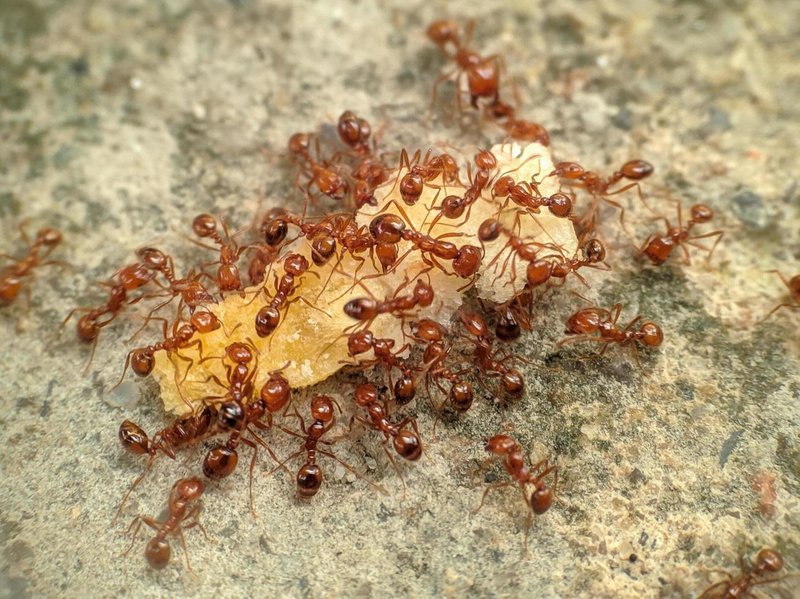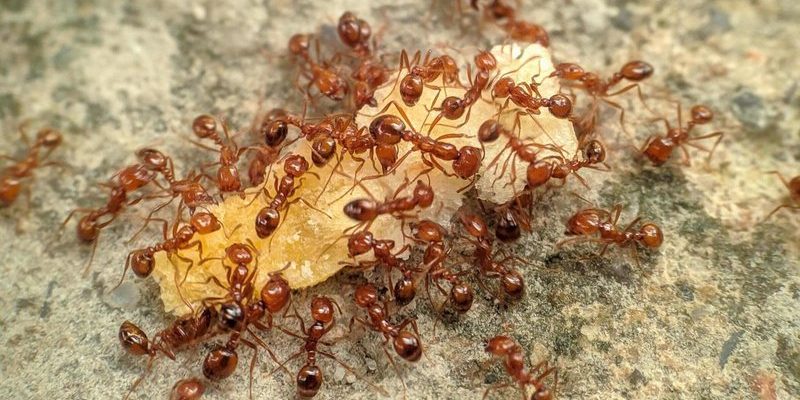
Let’s dig deeper into what makes fire ants so unique. They have complex social structures and are quite the overachievers in their ecosystem. From building intricate nests to helping with pollination, these ants are always on the move. When you start to look at their lives, you might just find that they have more in common with us than you might think!
What Are Fire Ants?
Fire ants belong to the genus *Solenopsis* and are known for their reddish-brown color and aggressive behavior. They are primarily found in the southern United States, but their range extends to several other countries as well. These ants are social insects, meaning they live in colonies that can number in the thousands. Each colony has a queen, workers, and sometimes male ants whose primary job is to mate and then die shortly after.
One interesting aspect of fire ants is how they build their nests. They create large mounds in the soil, which can be easily spotted in your yard. These mounds are like complex high-rises made up of dirt and plant material. Fire ants work together to maintain their homes and protect them from invaders. Honestly, it’s quite impressive when you consider the teamwork involved!
The Role of Fire Ants in Pollination
You might be surprised to hear that fire ants can play a role in pollination, similar to bees. When fire ants move from flower to flower searching for sugary nectar, they unintentionally transfer pollen. This process can help fertilize plants, leading to fruit and seed production. Here’s the thing: while they aren’t the most effective pollinators compared to bees, they still contribute to the broader ecosystem.
Imagine a beautiful flowering garden. As fire ants scurry around, they’re doing their part to help it thrive. They visit various blooms, and in doing so, they support the life cycle of plants, enhancing biodiversity. This connection is often overlooked when we think about their more infamous qualities.
Soil Aeration and Nutrient Recycling
Besides pollination, fire ants play a crucial role in *soil aeration* and nutrient recycling. Their constant digging and tunneling through the soil helps to break it up. This aeration process allows air, water, and nutrients to reach plant roots more efficiently. Healthier soil means healthier plants, which is beneficial for the overall ecosystem.
When fire ants decompose organic material, like dead insects and plant matter, they also contribute to nutrient cycling. By breaking down this matter, they return vital nutrients back into the soil. Essentially, fire ants are nature’s recyclers, helping keep their environment healthy and balanced.
Pest Control: Friends or Foes?
Another job that fire ants do is pest control. They are predators and will hunt and consume a variety of insects, including pests that damage crops. For farmers, this can be quite beneficial as fire ants help reduce the need for chemical pesticides. They target critters like caterpillars and grasshoppers, reducing their populations naturally.
However, it’s worth noting that fire ants themselves can become a problem when overpopulated. They can overwhelm areas and outcompete other beneficial insects. This can lead to a decrease in biodiversity. So, while they are helpful in moderation, having too many can turn them from allies to adversaries in a garden or agricultural setting.
Building Complex Colonies
Fire ants are master architects. Their colonies are not just a bunch of ants hanging out—they are well-organized communities. Inside a colony, you’ll find the queen, who focuses on reproduction, while worker ants take care of food gathering, nest maintenance, and defense. They work together seamlessly, much like a well-oiled machine.
When faced with threats, fire ants display remarkable teamwork. They can form rafts with their bodies to float during floods or even create barriers to protect their queen and young. This behavior shows not only their strength but also their well-developed social structure. It’s one of those details that make you appreciate how complex fire ants’ lives really are.
How Can We Coexist with Fire Ants?
Now that we know how important fire ants can be, you might wonder how to coexist with them peacefully. Here are a few tips:
- Observe their habitats:
- Try to avoid disturbing their nests. If they are in a garden, consider planting non-attractive plants nearby.
- Use natural deterrents:
- Mixing diatomaceous earth around areas can keep them at bay.
- Encourage biodiversity:
- The more diversity you have in your garden, the less chance fire ants will take over.
Remember, these tiny creatures are an important part of our ecosystem. Understanding them helps us find a way to live with them rather than against them.
Final Thoughts on Fire Ants
Fire ants are more than just an annoying pest. Their roles as pollinators, pest controllers, and soil aerators make them vital components of their ecosystems. Honestly, when you see them scurrying about, think of them as hard-working little helpers. Sure, their sting can be painful, but their contributions to the environment shouldn’t be overlooked.
By recognizing the significance of fire ants, we can learn how to manage our interactions with them while appreciating their role in maintaining nature’s balance. So next time you come across a fire ant mound, take a moment to think about these little workers and the big jobs they do!

